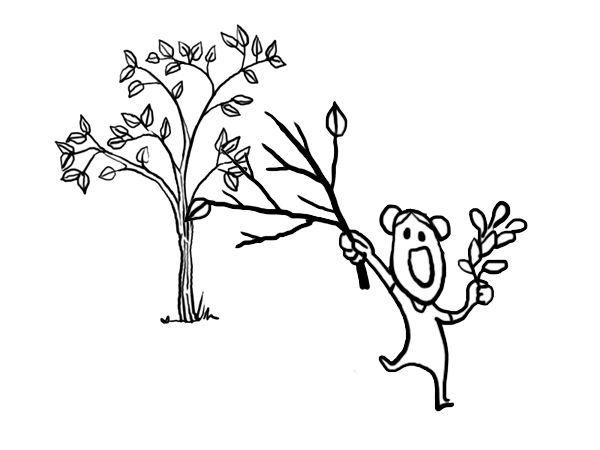While recent generations of children have had their natural play environments replaced with pre-fabricated plastic play structures, contemporary research points to the need to shift back toward more natural play spaces. These pre-fabricated structures are often focused solely on safety, with little regard for children’s developmental and play needs. While safety is important, it ought to not be the primary consideration when creating environments for children to play in.
In 2007, the results of a study entitled “Outside Criteria,” led by Professor Susan Herrington of the Landscape Architecture Department of the University of British Columbia (UBC), were released. These results were used to create a set of guidelines for outdoor play environments called the 7 Cs, linking the physical characteristics of these environments with what we know about childhood development.

Students play in the garden by Skala Design at Brock Elementary in Vancouver (Image: Skala Design)
Recently, Dr. Mariana Brussoni of the Department of Pediatrics at UBC and Professor Herrington combined forces with a team of two graduate students to examine the effects of implementing this research. This subsequent study focused on how redesigning the play environments at two Lower Mainland childcare facilities impacted children’s play behaviours, as well as mental and physical health. These childcare facilities, located in East Vancouver, had the lowest scores based on the 7 Cs criteria from Herrington’s previous research.
Rather than turning to standardized play equipment, the redesign implemented inexpensive and natural materials such as plants, sand, and bamboo poles. Not only is this method more cost effective, but it also seems to be more effective in terms of play value. According to Brussoni, preliminary visible results point to children engaging in more inventive play, and gaining increased confidence in play. An environment that shifts away from prescribed play and encourages children to use their imaginations in terms of how to use the space has the possibility to work wonders. In addition, strategically placing these natural elements throughout a large area encourages children to expand their play environment – effectively providing increased opportunities for diverse play and exploration.
While the focus of this study is on children ages 2-5, the implications of this approach to design suggest that older children would benefit as well. Opportunities to manipulate and shape their own environments, chances to play over a larger area, and the implementation of natural materials – all of these lessons from early childhood education centres can be carried forward to the design of play spaces at elementary schools.
